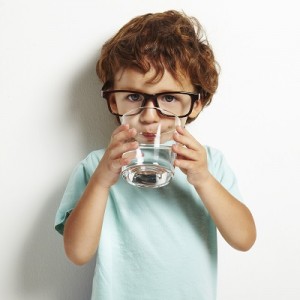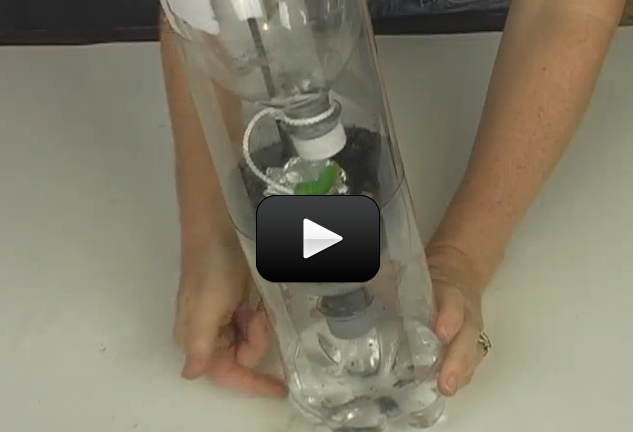 When birds and animals drink from lakes, rivers, and ponds, how pure it is? Are they really getting the water they need, or are they getting something else with the water?
When birds and animals drink from lakes, rivers, and ponds, how pure it is? Are they really getting the water they need, or are they getting something else with the water?
This is a great experiment to see how water moves through natural systems. We’ll explore how water and the atmosphere are both polluted and purified, and we’ll investigate how plants and soil help with both of these. We’ll be taking advantage of capillary action by using a wick to move the water from the lower aquarium chamber into the upper soil chamber, where it will both evaporate and transpire (evaporate from the leaves of plants) and rise until it hits a cold front and condenses into rain, which falls into your collection bucket for further analysis.
Sound complicated? It really isn’t, and the best part is that it not only uses parts from your recycling bin but also takes ten minutes to make.
[am4show have=’p8;p9;p11;p38;p92;p28;p55;p65;p86;p87;’ guest_error=’Guest error message’ user_error=’User error message’ ]
Here’s what you need:
- three 2-liter soda bottles, empty and clean
- razor with adult help
- scissors
- tape
- ruler
- 60 cm heavy cotton string
- soil
- water
- ice
- plants
- drill and drill bits
- fast-growing plant seeds (radish, grass, turnips, Chinese cabbage, moss, etc.)
Here’s what you do:
Download Student Worksheet & Exercises
Make sure your wicks are thoroughly soaked before adding the soil and plants! You can either add ice cubes to the top chamber or fill it carefully with water and freeze the whole thing solid. If you’re growing plants from seeds, leave the top chamber off until they have sprouted.
You can add a strip of pH paper both inside and outside your soil chamber to test the difference in pH as you introduce different conditions. You can check out the Chemical Matrix Experiment and the Acid-Base Experiment also!) What happens if you light a match, blow it out, and then drop it in the soil chamber? (Hint – you’ve just made acid rain!)
Do you think salt travels with the water? What if you add salt to the aquarium chamber? Will it rain salty water? You can place a bit of moss in the collection bucket to indicate how pure the water is (don’t drink it – that’s never a good idea).
Exercises
- Do you think salt travels with the water?
- What if you add salt to the aquarium chamber? Will it rain salty water?
- What happens if you light a match, blow it out, and then drop it in the soil chamber? (Hint – you’ve just made acid rain!)
[/am4show]


Energy is required anytime a living organism needs to make changes to itself. Without energy, plants would not be able to generate the chemical reactions needed to build their cells.
Why do plants need energy to grow ?
Yes, we recently recorded several hundred NEW videos that explain the science in more depth that go with the experiments. I am still working to integrate them into the program, so at this time, the best way to find them are to go into “Live Classes” (look in top nav bar) and then click on the subject (for the Water Cycle, you can go into May – Earth Science) and then click on the week that covers that topic in depth (Atmopsheres and Water Cycle). Does that help?
We did the live class last Thursday morning and bought the entire grade level package. However I am trying to access a video to do this week like the one you did last week with my granddaughter. I do not see a video to go with these lessons, just a guide to do the experiment. Is there teaching lesson video for each subject?
thank you
Paula
Yes please make sure you are logged in first, and then you will see the video and the student worksheet download below the video.
Do you have a lesson that goes with this video?
So glad you enjoyed the webinar! And I’ve sent you a private email!
Same question: I am looking for the lesson to go with the labs. The webinar today was perfect – something engaging to watch interspersed with practical applications. My daughter loved it!
I actually have the same question. If you could email me as well 🙂
I have sent you a private email in response. Thank you!
Hi! We’re new to this program and I have a question…Do you provide teaching lessons associated with the labs? I can execute the directions but, unfortunately, I’m struggling to explain how and why the water is effected by changing the variables. For example, is there a lesson regarding capillary action? I love the labs, however, I’d love more guidance explaining the science behind them.
Thanks so much,
Liz